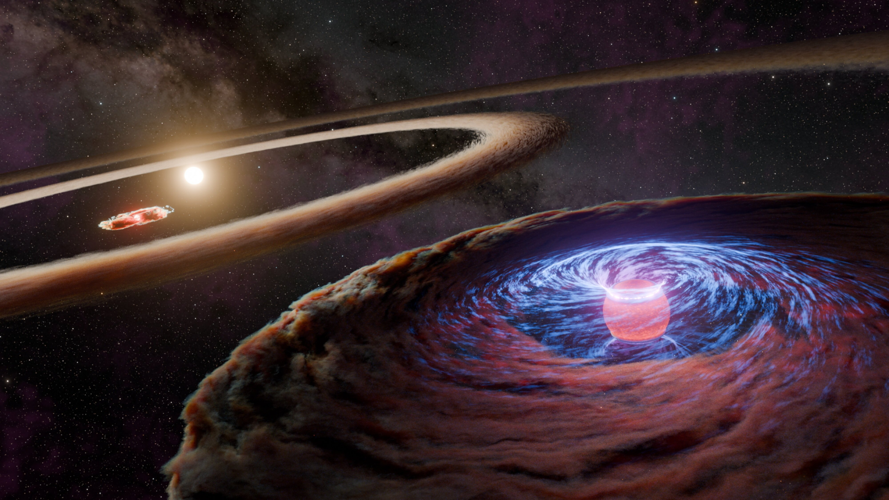
(Laird Close/Univ. of Arizona via SWNS)
By Dean Murray
A team of astronomers has detected for the first time a growing planet inside a ring.
The planet, named WISPIT 2b, is outside our Solar System and embedded in a cleared gap of a multi-ringed disc of dust and gas.
The researchers, led by University of Arizona astronomer Laird Close and Richelle van Capelleveen, an astronomy graduate student at Leiden Observatory in the Netherlands, discovered the unique exoplanet using powerful telescopes.
WISPIT 2b, labeled a protoplanet because it is accumulating material and growing into a fully realized planet, is a gas giant about five times as massive as Jupiter.
The massive protoplanet is around 5 million years old, or almost 1,000 times younger than the Earth, and about 437 light-years from Earth.
These masses were inferred, in part, from the thermal infrared light observed by the University of Arizona’s 8.4-metre Large Binocular Telescope on Mount Graham in south-eastern Arizona with the help of U of A astronomy graduate student Gabriel Weible.

(Laird Close/Univ. of Arizona via SWNS)
Gabriel Weible said: "It's a bit like what our own Jupiter and Saturn would have looked like when they were 5,000 times younger than they are now.
"The planets in the WISPIT-2 system appear to be about 10 times more massive than our own gas giants and more spread out. But the overall appearance is likely not so different from what a nearby 'alien astronomer' could have seen in a 'baby picture' of our Solar System taken 4.5 billion years ago."
Laird Close added: "Dozens of theory papers have been written about these observed disc gaps being caused by protoplanets, but no one's ever found a definitive one until today.
"It's been a point of tension, actually, in the literature and in astronomy in general, that we have these really dark gaps, but we cannot detect the faint exoplanets in them.
"Many have doubted that protoplanets can make these gaps, but now we know that in fact, they can."
The discovery is detailed in papers published in the Astrophysical Journal Letters.
























(0) comments
Welcome to the discussion.
Log In
Keep it Clean. Please avoid obscene, vulgar, lewd, racist or sexually-oriented language.
PLEASE TURN OFF YOUR CAPS LOCK.
Don't Threaten. Threats of harming another person will not be tolerated.
Be Truthful. Don't knowingly lie about anyone or anything.
Be Nice. No racism, sexism or any sort of -ism that is degrading to another person.
Be Proactive. Use the 'Report' link on each comment to let us know of abusive posts.
Share with Us. We'd love to hear eyewitness accounts, the history behind an article.